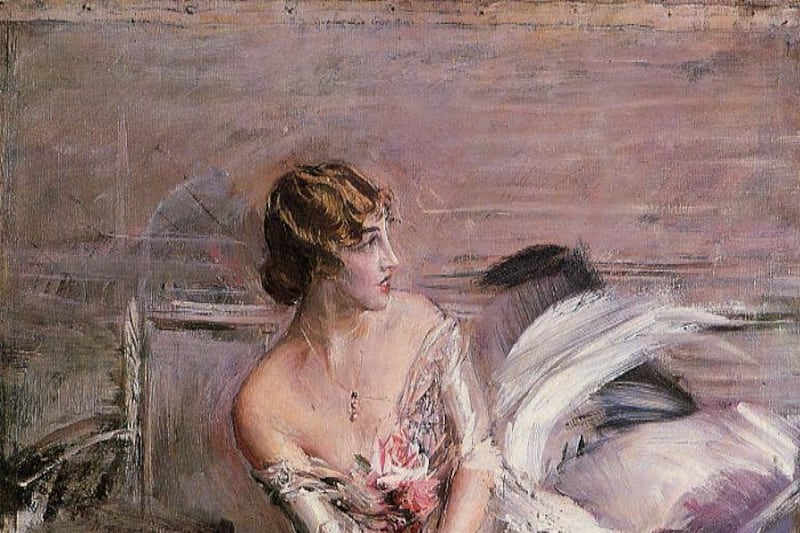The continuing mystery of Maxim Litvinov’s pre-revolutionary days as a door-to-door salesman in rural Ireland sent me to the National Library to consult the 1985 issue of a journal called Irish Slavonic Studies.
For those late to this saga, I should recap briefly. The main authority – if we can call him that – on Litvinov’s sales career is Patrick Kavanagh, who recalled childhood memories of Stalin’s future foreign minister visiting Inniskeen to sell “haberdashery”, and “holy pictures”.
This has since been somewhat corroborated by one of my readers, via a north Cork grandfather who remembered something similar there.
And Irish newspaper archives from the 1950s do have fleeting references to Litvinov’s former salesmanship, but always in connection (and sometimes confusion) with his in-laws, the Levinsons, merchants in various parts of Ulster.
Drum role: Alison Healy casts an incredulous eye over a much-loved Christmas carol
Kindred spirit: Áine Ryan on the joys of reliving a Christmas childhood through her grandchildren
The woman who enchanted Proust – Frank McNally on the rise and fall of Gladys Marlborough
‘He never said that’: Frank McNally is tired of hearing a phantom WB Yeats quote
The relevant article in Irish Slavonic Studies was written by Neil Cornwell (1942-2020), who spent a decade from 1973 as lecturer in Queen’s University before becoming a professor of Russian in Bristol.
He had contacted surviving relatives to find out more about the revolutionary’s time in Ireland. And while expressing surprise at how little is recorded about him between 1908 and 1912, Cornwell contended that Litvinov spent the first two of those years with his sister (who had married a Levinson) in Belfast.
He also quotes from Belfast Telegraph articles published in 1940, describing Litvinov’s life there during the first World War, while awaiting “the call from Moscow”.
That eventually came, precipitating his quiet departure, by which he eluded “the hounds of the Cheka” (as the Telegraph anachronistically described the Czarist policemen) watching his house.
Beyond mention of the Levinsons’ business in “Clones”, and what became the “Border” areas, Cornwell does not mention Litvinov’s activities outside Belfast.
But he makes the telling point that even his Belfast period “has not entered the standard published accounts of Litvinov’s life”.
Then he advances two plausible reasons why. One is that the private lives of revolutionary figures were often suppressed: “Once the Revolution has been achieved, behaviour in the pre-Revolutionary epoch was to be treated with the same solemnities as if it had occurred in the days of responsibility and office.”
The other involves religion. Cornwell quoted a niece of Litvinov recalling a “row” her mother (his sister) had with him, after which she severed connections “for fear that his atheistic and revolutionary ideas would infect her Jewish family”.
As readers may recall, I at first tended to doubt Patrick Kavanagh’s recollections of Litvinov in Mucker, as recorded in John Ryan’s memoir of Bohemian Dublin circa 1950, Remembering How We Stood.
This was partly because Kavanagh – a man of great imagination – was the only source.
But his story may stand up after all. Considering the demands of post-Revolutionary purity and the tensions of émigré family life, it may be no surprise that Litvinov’s Irish apprenticeship selling haberdashery and holy pictures was elsewhere elided from the record.
***
Speaking of John Ryan, I may be able to clear up another mystery mentioned here recently: how the site of his pub The Bailey has become so commonly confused with that of the Burton restaurant, featured damningly in Ulysses.
My thanks to Joycean detective Senan Molony (fresh from delivering Sophie – The Final Verdict, his book on Sophie Toscan du Plantier) who has traced this myth as far back as 1960.
It’s there in William York Tindall’s influential guide The Joyce Country, which features a picture of Duke Street, looking east, with the caption: “The ‘Burton’ (actually the Bailey), where Bloom has his vision of Lestrygonians slopping food up, is to the left.”
On the contrary, it was to the right, beyond Davy Byrne’s on the corner with Duke Lane. Or rather it wasn’t, by then. But a new Burton’s now stands there, about to open.
In the interim, the Joycean pavement plaques – planted during the 1982 centenary – had it right all along. The one commemorating Leopold Bloom’s visit to the restaurant is exactly where it should be, as confirmed by the sign of the new “Burton Tavern” looming above it.
This is more than can be said for the plaque at the nearby corner of Duke and Dawson Streets, which commemorates Bloom’s later encounter with a “blind stripling”:
“– You’re in Dawson street, Mr Bloom said. Molesworth Street is opposite. Do you want to cross?”
Molesworth Street is certainly not now opposite where the plaque is. And I presume the street hasn’t moved since 1904. So I checked with another Joycean oracle, Prof Sam Slote, author of the monumental “Annotations” (aka the “Slotations”), who confirmed that the plaque is wrongly placed – for a reason.
As explained to him by Robert Nicholson, one of those behind the 1982 scheme, the right spot was blocked then by work on what became Royal Hibernian Way. Hence the slight relocation.
Perhaps the plaque will be exhumed from the footpath at some point and reburied in the right spot. In the meantime, I must give the last word on this subject to Detective Molony.
“Of course, you know the blind stripling is Homer?” he told me in passing. Which I hadn’t known, somehow. But Senan was running to catch a plane to Washington so he didn’t have time to elaborate.














